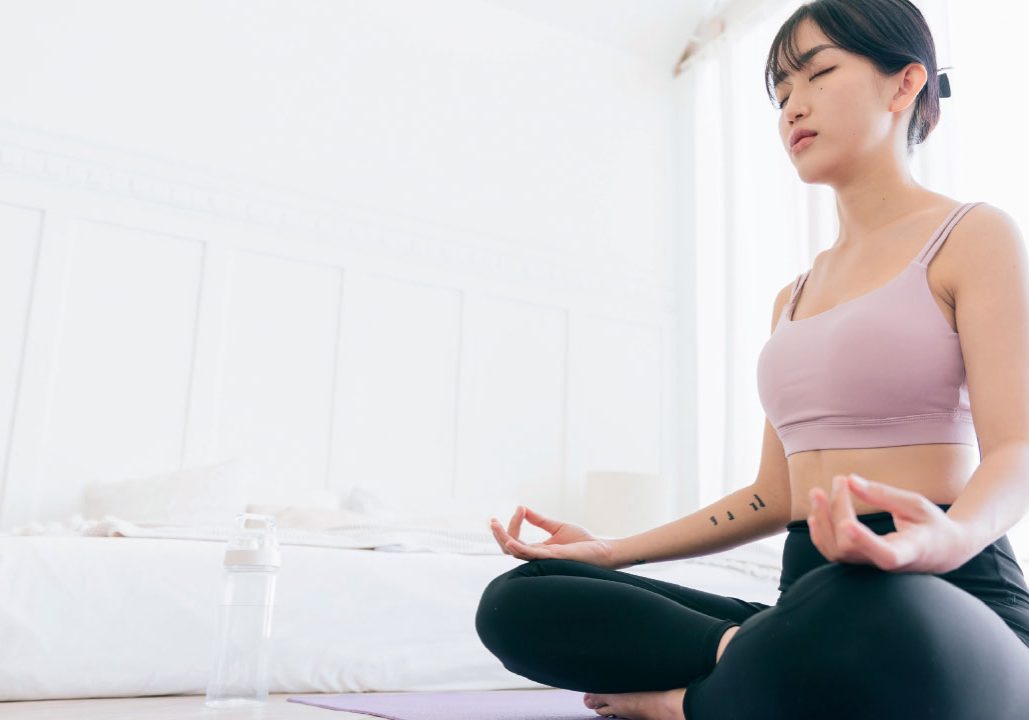
Why breathe consciously?
Controlled breathing is free. No equipment, or travel required. No special talent needed, only that you breathe, watch, feel, and allow the physical, emotional and spiritual to ‘enlighten up’ your day. By Marja Wilson
Reading time: 4 minutes
Breathing is one of the most natural and indispensable reflexes, yet rarely do we notice it until it is disturbed. It’s worth knowing that by controlling this vital life force, your quality of living improves exponentially. Thanks to the ancient principles of yoga, and now yoga’s popularity, the inseparable relationship of the mind, body, and breath is no longer an esoteric concept, but based firmly in scientific evidence. The way you breathe makes a difference.
At times, you may not even notice how a quiet pant with shallow sips of air or sighing is due to a shortness of breath. This type of breathing from the chest is the body’s signal to the fight-or-flight response. Stewing in this heightened feedback loop is often the cause of stress and the negative consequences of this are well documented.
However, the long and balanced breathing of yoga’s pranayama continues to make grand entrances across the fields of health as the antidote of choice. Controlled breathing techniques target the nervous system, and the psycho-emotional benefits, including the alleviation of stress, are phenomenal. Pranayama can also be used as a form of meditation. Paying attention to the way you breathe is a fundamental principle of yoga and is one of its most powerful tools to enhance physical, emotional, and spiritual wellbeing.
Basically, Pranayama is the Sanskrit word for ‘breath control’. Made up of ‘prana’ and ‘yama’ it’s loosely translated as ‘mastery of the life force’, since breathing is the ruling source of existence. Prana, a type of energy, rides on the constant flow of oxygen. Every emotional state has a pattern of breathing and it’s expressed through the nervous system constantly affecting prana. Strengthening your life force by working with the breath has shown impressive results. Here are a few:
Physical benefits:
The automatic reaction to the ‘fight or flight’ response occurs by perceived or actual threats, and mobilised by the nervous system. Unfortunately, the sympathetic nervous system does not differentiate between real and imagined threats so it is up to the executive functioning of the brain to notice. This is where the use of your mind overrides stimulus response with conscious breathing. The repetition of full belly breaths with extended exhalations quells the effects of unnecessary alarm and turns off the negative impact of unwarranted overstimulation. The return to a gradual state of equilibrium with a notable sense of confidence and self-control is felt within minutes.
Emotional benefits:
Do you remember a parent or teacher telling you to take a few deep breaths when anger flared? This folk wisdom is solidly demonstrated when spent with a little time regulating the breath. By breaking unconscious patterns of shallow breathing and the emotional patterns that fuel them, our breathing relaxes. Many people fall into habits of thinking with negative feelings that dominate their consciousness even when they are out of step with what life is presenting. As a result, the cognitive experience narrows and becomes more rigid. A daily practice of pranayama works against this unproductive tendency and helps to prevent habitual emotional glitches. It’s the parasympathetic nervous system which is receptive to intentional breathing. Using the techniques of pranayama by taking time to consciously engage the parasympathetic nervous system will reprogram the habitual pull toward provocation and reduce the psychological risks associated with distress.
“Start by resolving the immediate self-imposed resistance to do something good for yourself and then take 10 minutes for conscious breathing. It can be enough to ‘enlighten-up’ your day!”
Spiritual effects:
The wisdom of yoga teaches us that the elements of conscious breathing polishes the nervous system to better serve the body, mind and spirit by opening a gateway to greater awareness. The external environment, with all its temporal distractions including one’s own rampant thoughts, are left in the periphery when there is an effort to focus on an inward function such as the breath. The stillness that flanks a steady mind invites cognitive potential. Simultaneously, breathing and paying attention to the breath can also be used to focus the mind during meditation. When it can be relaxed and held steady, it is called ‘dharana’. This unbroken flow of effortless concentration becomes what’s known as ‘dhyana’, and its fruit is ‘samadhi’, or total awareness.
People have described samadhi as a deep sense of receptivity and nothing short of spiritual. The experience might be similar to increasing the wattage of a lightbulb to produce more light and heat. Practicing pranayama every day, your subtle wiring gradually becomes stronger, conducting more light and energy. On many levels, it is increasing the capability of prana to handle more of life and it can be, proverbially, enlightening.
This is just a glimpse at the catalogue of benefits conscious breathing offers across the physical, emotional and spiritual landscapes. This can be more than enough inspiration to want to practice, however, the real pay-off goes beyond Western science. Yogic wisdom proposes that mastering the life force that rides on the breath, prana illuminates the subtle energy that drives our consciousness and connects us with our true nature. Therefore, pranayama is thought of as the cornerstone of transformation.
There’s no cost, equipment, or travel. No special talent is required, only that you breathe, watch, feel, and allow the physical, emotional and spiritual benefits to manifest. Start by resolving the immediate self-imposed resistance to do something good for yourself and then take 10 minutes for conscious breathing. It can be enough to ‘enlighten-up’ your day!
Marja Wilson, MS, eRYT500, is a certified yoga instructor, freelance writer and horse lover. She lives part-time in the US and Australia. Visit: farviewhorserescue.com




